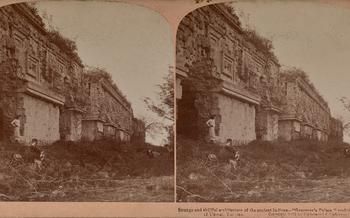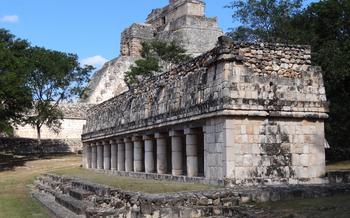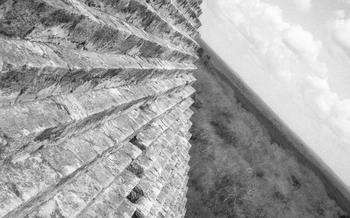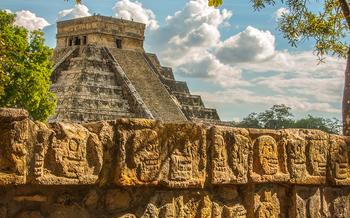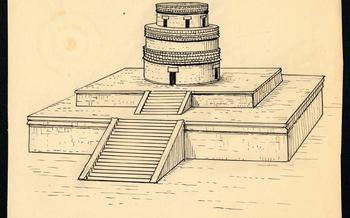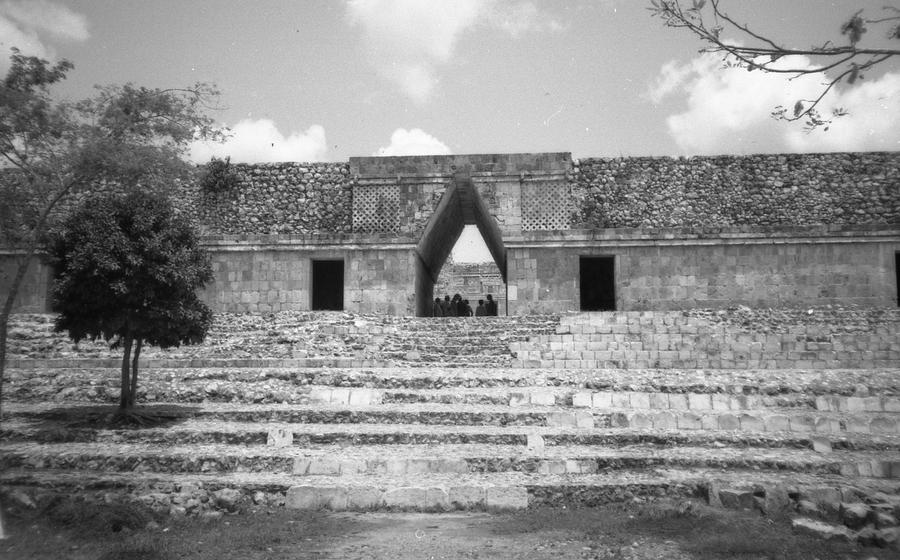
The Labyrinth of the Mayas Outdoor Museum
- History of the Labyrinth of the Mayas Outdoor Museum:
- Exploring the Sculptures
- Walking Through the Labyrinth
- The Interactive Exhibits:
- Learning About Mayan Culture
- The Natural Beauty of Uxmal
- Getting to the Museum
- Nearby Attractions:
- Food and Accommodation
- Photography and Videography
- Accessibility and Facilities
- Sustainability and Conservation
- Local Customs and Etiquette:
- Insider Tip:
History of the Labyrinth of the Mayas Outdoor Museum:
The Labyrinth of the Mayas Outdoor Museum is a unique cultural and historical site that offers visitors a glimpse into the rich history and traditions of the ancient Mayan civilization. Founded in 1993, the museum was the brainchild of Don Juan Miguel Castro Pacheco, a local farmer and self-taught archaeologist. Inspired by his passion for Mayan culture and his desire to preserve its legacy, Don Juan Miguel began collecting artifacts and sculptures from the surrounding area. Over time, his collection grew to include hundreds of pieces, and in 1993, he opened the Labyrinth of the Mayas Outdoor Museum to share his passion with the world.
The museum is strategically located along the Puuc Route, an important archaeological and cultural region in the Yucatán Peninsula. The Puuc region is home to a number of ancient Mayan cities and ceremonial centers, including the famous ruins of Uxmal. The museum's proximity to Uxmal and other important archaeological sites makes it an ideal destination for visitors interested in exploring the rich history and cultural heritage of the Mayan civilization.
The Labyrinth of the Mayas Outdoor Museum is not only a repository of Mayan artifacts but also a celebration of Mexican culture and traditions. The museum's design and layout are inspired by traditional Mayan architecture and symbolism. The sculptures and exhibits are carefully arranged to tell the story of Mayan history, mythology, and daily life. Visitors to the museum will gain a deeper understanding of the complex and fascinating culture of the ancient Mayans, as well as the enduring legacy of their traditions in modern Mexican society.
Exploring the Sculptures
The sculptures at the Labyrinth of the Mayas Outdoor Museum are a testament to the artistry and creativity of the ancient Mayan civilization. Carved from limestone, these intricate works of art depict a variety of subjects, from mythological creatures to scenes of everyday life. Some sculptures tell stories of gods and heroes, while others commemorate important events in Mayan history. The techniques used by Mayan artists to create these sculptures are still admired today for their precision and detail.
The most striking feature of the sculptures is their intricate designs. The Mayans used a variety of techniques to create these designs, including carving, molding, and sculpting. The resulting works of art are visually stunning and often incorporate complex symbolism. Some sculptures feature human figures with exaggerated features, while others depict animals, plants, and other natural elements.
The sculptures at the Labyrinth of the Mayas Outdoor Museum offer a glimpse into the rich culture and beliefs of the ancient Mayans. By studying these works of art, we can learn more about their history, their mythology, and their way of life. The museum provides a unique opportunity to appreciate the beauty and complexity of Mayan art and to gain a deeper understanding of this fascinating civilization.
Walking Through the Labyrinth
The Labyrinth of the Mayas Outdoor Museum features a captivating labyrinthine path that invites visitors to embark on a journey of discovery and wonder. The layout of the labyrinth is intricate and symbolic, representing the complexities of Mayan culture and the interconnectedness of all things. As you navigate through the winding paths, you'll encounter hidden corners, unexpected turns, and breathtaking vistas that reveal the beauty of the surrounding landscape.
The symbolism behind the labyrinthine path is profound and meaningful. It represents the journey of life, with its challenges, obstacles, and triumphs. The twists and turns of the labyrinth symbolize the choices we make and the paths we take, leading us to different destinations and experiences. The labyrinth also serves as a metaphor for the interconnectedness of all things, reminding us that our actions and decisions have far-reaching consequences.
Navigating through the labyrinth is an immersive and transformative experience. The sense of discovery and wonder builds as you explore the hidden corners and uncover the secrets of the labyrinth. The labyrinthine path challenges your perception and encourages you to let go of expectations, allowing you to embrace the unknown and appreciate the beauty of the present moment.
The Labyrinth of the Mayas Outdoor Museum is a place where you can lose yourself in the wonder of ancient Mayan culture while reflecting on the deeper meanings of life and the interconnectedness of all things. It's a journey that will stay with you long after you leave the museum, inspiring you to embrace new perspectives and appreciate the beauty and complexity of the world around you.
The Interactive Exhibits:
The Labyrinth of the Mayas Outdoor Museum offers a range of interactive exhibits that enhance the visitor experience and provide a deeper understanding of Mayan culture. These exhibits are designed to engage visitors of all ages and backgrounds, making learning about Mayan history and traditions a fun and interactive experience.
One of the highlights of the museum is the hands-on activities that allow visitors to experience Mayan culture firsthand. Visitors can try their hand at grinding corn using a traditional metate and mano, learn about the Mayan calendar by manipulating interactive displays, and even create their own Mayan glyphs using stencils and stamps.
The museum also features educational programs and workshops that provide visitors with a deeper understanding of Mayan culture and history. These programs cover a wide range of topics, from Mayan astronomy and mathematics to their art and architecture. Visitors can participate in guided tours led by knowledgeable experts who share insights and stories about the Mayan civilization.
To enhance the visitor experience, the museum utilizes technology in innovative ways. Interactive touchscreens and multimedia displays provide visitors with additional information about the sculptures, the labyrinth, and Mayan culture. Virtual reality experiences transport visitors back in time, allowing them to explore ancient Mayan cities and immerse themselves in the world of the Maya.
The interactive exhibits at the Labyrinth of the Mayas Outdoor Museum offer visitors a unique and engaging way to learn about Mayan culture. By providing hands-on activities, educational programs, and interactive technology, the museum creates a dynamic and memorable experience that leaves visitors with a deeper appreciation for the rich history and traditions of the Maya.
Learning About Mayan Culture
The Labyrinth of the Mayas Outdoor Museum is not just a place to admire ancient sculptures; it also serves as a vital institution for preserving and promoting Mayan culture. Through its educational programs and workshops, the museum provides visitors with an opportunity to delve deeper into the rich history, traditions, and beliefs of the Mayan people. These programs cover a wide range of topics, including Mayan mythology, hieroglyphics, and traditional arts and crafts. By participating in these activities, visitors can gain a deeper understanding and appreciation for the enduring legacy of Mayan culture.
The museum also collaborates with local Mayan communities to showcase their contemporary traditions and perspectives. This collaboration ensures that the museum's portrayal of Mayan culture is authentic and respectful, reflecting the continuity and vitality of Mayan cultural practices. Visitors can interact with local artisans, learn about traditional weaving techniques, and participate in cultural workshops, creating a more immersive and meaningful experience.
Understanding Mayan culture is essential for appreciating the significance of the sculptures and exhibits at the Labyrinth of the Mayas Outdoor Museum. By immersing themselves in the cultural context, visitors can gain a deeper appreciation for the artistic expressions, symbolic meanings, and historical narratives that shaped the Mayan civilization. This knowledge enhances the overall museum experience, allowing visitors to connect with the past and present of the Mayan people in a meaningful way.
The Natural Beauty of Uxmal
The Labyrinth of the Mayas Outdoor Museum is situated within the stunning natural surroundings of Uxmal, offering visitors a breathtaking backdrop to their explorations. Verdant vegetation surrounds the museum, creating a lush and tranquil oasis. The diverse wildlife that inhabits the area adds to the enchantment, with colorful birds flitting through the trees and small animals scurrying about the undergrowth.
From the museum grounds, visitors can enjoy panoramic views of the Puuc hills, which rise majestically in the distance. The rolling green hills, dotted with ancient Maya ruins, create a landscape that is both awe-inspiring and serene. The tranquil atmosphere of the museum's setting invites visitors to slow down, relax, and connect with the natural world.
The museum's design harmoniously integrates with its natural surroundings. The sculptures are arranged amidst the lush vegetation, creating a seamless blend of art and nature. Visitors can wander through the labyrinthine paths, discovering hidden sculptures and admiring the way they interact with the landscape. The museum's commitment to sustainability further enhances its natural beauty, with eco-friendly practices and conservation programs ensuring the protection of the environment for future generations.
Getting to the Museum
The Labyrinth of the Mayas Outdoor Museum is situated along the Puuc Route, a designated circuit of ancient Maya cities and archaeological sites in the Yucatán Peninsula. The museum's convenient location makes it easily accessible from various parts of the region.
If you're traveling by car, the museum is a scenic drive away from major cities like Mérida and Cancún. The well-maintained roads and clear signage along the Puuc Route ensure a smooth and enjoyable journey.
For those relying on public transportation, buses and shuttles regularly depart from nearby towns and cities, providing an affordable and convenient option to reach the museum.
The proximity of the museum to other attractions in the region allows you to combine your visit with exploring other archaeological sites, natural wonders, and cultural landmarks. This interconnectedness makes the Puuc Route an ideal destination for history enthusiasts and nature lovers alike.
Nearby Attractions:
The Labyrinth of the Mayas Outdoor Museum is situated within the Puuc Route, a region renowned for its rich Mayan heritage and natural wonders. In addition to the museum, visitors can explore a multitude of other captivating attractions in the surrounding area.
-
Archaeological Sites: Immerse yourself in the ancient world by visiting nearby archaeological sites such as Kabah, Sayil, and Labná. These sites boast impressive pyramids, temples, and plazas, providing a glimpse into the grandeur of the Mayan civilization.
-
Cenotes: Discover the beauty of the Yucatan Peninsula's cenotes, natural sinkholes filled with crystal-clear water. Take a refreshing dip, snorkel among colorful fish, or simply relax and admire the stunning scenery.
-
Caves: Embark on an adventurous spelunking expedition in the nearby caves. Explore underground chambers adorned with stalactites and stalagmites, and learn about the unique ecosystem that thrives within these subterranean wonders.
-
Wildlife Reserves: Observe the diverse wildlife of the region in protected reserves such as the Reserva de la Biosfera de Ria Lagartos. Spot exotic birds, crocodiles, and flamingos in their natural habitat.
-
Cultural Attractions: Delve into the vibrant culture of the region by visiting local museums, markets, and traditional villages. Experience the warmth and hospitality of the Mayan people, learn about their customs and traditions, and immerse yourself in the region's rich artistic and culinary heritage.
Combining a visit to the Labyrinth of the Mayas Outdoor Museum with these nearby attractions offers a comprehensive and unforgettable exploration of the Puuc Route's cultural and natural treasures.
Food and Accommodation
There are several dining options near the Labyrinth of the Mayas Outdoor Museum. The Museum Restaurant offers a variety of regional dishes and international cuisine, with indoor and outdoor seating overlooking the lush gardens. For a more casual experience, there are several cafes and snack bars within walking distance of the museum, serving light meals, refreshments, and local snacks.
When it comes to accommodation, there are plenty of options to choose from in the surrounding area. For those seeking a luxurious stay, the Hacienda Uxmal Plantation & Museum is a beautiful historic property offering elegant rooms and suites, a swimming pool, and a spa. For a more budget-friendly option, there are several guesthouses and hostels within a short distance of the museum, providing comfortable and affordable accommodations.
To find authentic and affordable dining experiences, venture outside the main tourist areas and explore the local markets and restaurants frequented by the locals. Ask your hotel or tour guide for recommendations on the best places to sample traditional Mayan dishes such as cochinita pibil, panuchos, and salbutes.
For those planning to stay overnight, it's advisable to book your accommodation in advance, especially during peak tourist season. Several online platforms and travel agencies offer a wide range of options to suit different budgets and preferences.
Photography and Videography
The Labyrinth of the Mayas Outdoor Museum welcomes photography and videography to help visitors capture and share their experiences. However, to ensure the preservation of the sculptures and the overall tranquility of the museum, certain guidelines must be followed.
-
Respect the Artworks: When taking photos or videos, maintain a respectful distance from the sculptures to avoid touching or damaging them. Use a zoom lens if necessary.
-
Flash Photography: To prevent any harm to the sculptures or disturbance to other visitors, the use of flash photography is prohibited within the museum.
-
Tripods and Monopods: The use of tripods and monopods is generally permitted, but they must not obstruct pathways or interfere with other visitors' experiences.
-
Commercial Photography: Professional photographers and videographers who wish to use the museum's grounds for commercial purposes must obtain prior permission from the museum's administration.
-
Share Your Experience: The museum encourages visitors to share their photos and videos on social media, tagging the museum and using relevant hashtags. This helps spread awareness and appreciation of Mayan culture.
Accessibility and Facilities
The Labyrinth of the Mayas Outdoor Museum is committed to providing an accessible and inclusive experience for all visitors. The museum is equipped with ramps, elevators, and accessible restrooms to ensure that visitors with disabilities can fully enjoy the museum's offerings.
Additionally, the museum provides wheelchairs and other assistive devices upon request, making it easier for visitors with mobility challenges to navigate the museum grounds. A visitor center and gift shop are also available, offering a range of souvenirs and educational materials.
In line with its commitment to sustainability, the museum has implemented eco-friendly practices in its construction and operation. The use of energy-efficient lighting, water-saving fixtures, and renewable energy sources reduces the museum's environmental impact.
Furthermore, the museum is engaged in conservation programs aimed at preserving the sculptures and the surrounding ecosystem. Visitors are encouraged to respect the environment and dispose of waste responsibly to help protect the natural beauty of the museum and its surroundings.
Sustainability and Conservation
The Labyrinth of the Mayas Outdoor Museum is committed to promoting sustainable practices and protecting the environment. The museum's construction and operation utilize eco-friendly materials and technologies, minimizing its ecological footprint. Conservation programs are in place to preserve the sculptures and the surrounding ecosystem, ensuring the long-term viability of this cultural heritage. Responsible tourism is encouraged, emphasizing respect for the local environment and the preservation of the region's natural beauty. By embracing sustainability, the museum sets an example for other cultural institutions and contributes to the responsible development of the tourism industry in Mexico.
Local Customs and Etiquette:
When visiting the Labyrinth of the Mayas Outdoor Museum and the surrounding area, it is important to be respectful of the local Mayan culture and customs. The local people are generally friendly and welcoming, and they appreciate visitors who make an effort to learn about their traditions. Here are some tips for interacting respectfully with the local community:
- Learn a few basic Spanish phrases. Even if you don't speak Spanish fluently, learning a few basic phrases such as "hello," "thank you," and "excuse me" can go a long way in showing your respect for the local culture.
- Dress appropriately. When visiting the museum and the surrounding area, it is important to dress modestly and respectfully. Avoid wearing revealing clothing or clothing with offensive images or language.
- Be mindful of your behavior. When visiting the museum, be respectful of the sculptures and exhibits. Do not touch or climb on the sculptures, and be mindful of your noise level.
- Ask permission before taking photos. Before taking photos of local people, always ask their permission first. This is especially important when photographing children.
- Support local businesses. When shopping for souvenirs or dining out, make an effort to support local businesses. This helps to keep money in the local community and supports the local economy.
Insider Tip:
To truly immerse yourself in the magic of the Labyrinth of the Mayas Outdoor Museum, plan your visit for a weekday morning when the crowds are at their smallest. You'll have the chance to wander through the labyrinthine paths and admire the sculptures at your own pace, without the hustle and bustle of other visitors. For an even more unique experience, consider visiting during the museum's annual "Noche Maya" event, held on the first Saturday of every month. This special evening event features live music, traditional Mayan dances, and guided tours under the starry sky, providing a truly unforgettable experience.
As you explore the museum, keep an eye out for hidden gems like the sculpture of a Mayan king playing a ball game, tucked away in a secluded corner of the labyrinth. Don't forget to bring your camera to capture the intricate details of the sculptures and the stunning panoramic views from the top of the pyramid. For a taste of authentic local cuisine, head to one of the nearby restaurants in Uxmal town and indulge in traditional Mayan dishes like cochinita pibil and panuchos.
Remember to be respectful of the local customs and traditions during your visit. Dress modestly and avoid wearing revealing clothing. It's also a good idea to learn a few basic Spanish phrases to communicate with the local people. By embracing the local culture and respecting the environment, you'll contribute to the preservation of this unique and precious heritage.

